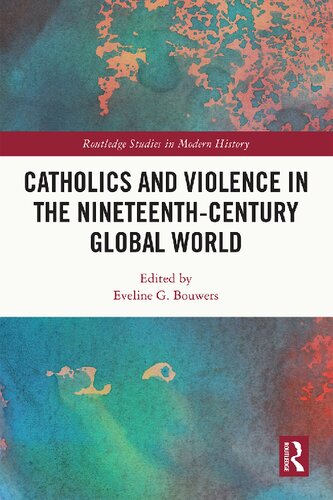

Most ebook files are in PDF format, so you can easily read them using various software such as Foxit Reader or directly on the Google Chrome browser.
Some ebook files are released by publishers in other formats such as .awz, .mobi, .epub, .fb2, etc. You may need to install specific software to read these formats on mobile/PC, such as Calibre.
Please read the tutorial at this link: https://ebookbell.com/faq
We offer FREE conversion to the popular formats you request; however, this may take some time. Therefore, right after payment, please email us, and we will try to provide the service as quickly as possible.
For some exceptional file formats or broken links (if any), please refrain from opening any disputes. Instead, email us first, and we will try to assist within a maximum of 6 hours.
EbookBell Team

4.3
28 reviewsThis book analyzes violence involving Catholics in the nineteenth-century world – revealing the motives for violence, showing the link between religious and secular grievances, and illuminating Catholic pluralism.
Catholics and Violence in the Nineteenth-Century Global World is the first study to systematically analyze the link between faith and violent action in modern history. Focusing on incidents involving members of the Roman Catholic Church across the globe, the book offers a kaleidoscopic overview of situations in which physical or symbolic violence attended inner-Catholic, Catholic-secular, and interreligious conflicts. Focusing especially on the role of agency, the authors explore the motives behind, perceptions of, and legitimation strategies for religion-related violence, as well as evaluating debates about conflict and discussing the role of religious leadership in violent incidents. Additionally, they illuminate the complex ways in which religious grievances interacted with secular differences and highlight the plurality of Catholic standpoints. In doing so, the book brings to light the variety of ways in which religion and violence have interacted historically.
Showing that the link between faith and violence was more nuanced than theoreticians of ‘religious violence’ suggest, the book will appeal to historians, social scientists, and religious scholars.